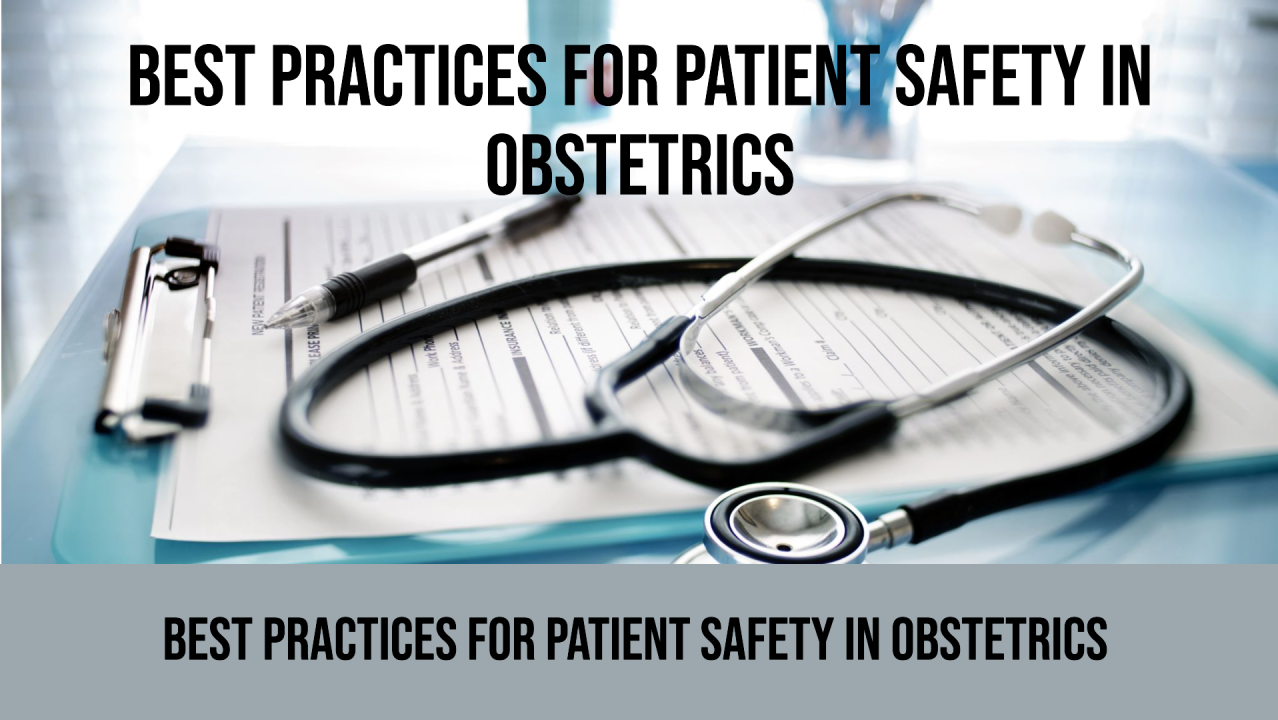Obstetrics and Gynecology (OBGYN) practices are crucial healthcare facilities that cater to the unique needs of women during pregnancy, childbirth, and beyond. Ensuring Patient Safety in Obstetrics is a top priority in obstetrics as it involves various intricate processes and sensitive procedures. By implementing best practices and optimizing key areas within the obstetric care setting, medical practitioners can enhance patient safety, improve outcomes, and streamline operations.
Table of Contents
Billing Process Optimization
Efficient billing processes play a significant role in the financial sustainability of medical practices. Automating billing tasks can help reduce errors, minimize delays, and ensure timely revenue collection. By streamlining revenue cycle management, OBGYN practices can enhance financial performance and focus more on providing quality patient care. Outsourcing billing services to specialized firms can also alleviate administrative burdens and improve overall efficiency. Implementing a user-friendly billing system with integrated electronic health records can improve billing accuracy and reduce the risk of coding errors. This can lead to faster reimbursement and fewer rejected claims, ultimately improving cash flow for the practice.
Outsourcing billing services to specialized firms can also provide access to expert billing professionals who are trained in the intricacies of OBGYN billing processes. This can help ensure that claims are submitted correctly and in a timely manner, reducing the risk of payment delays or denials.
Enhancing Obstetric Care
Enhancing obstetric care goes beyond medical interventions; it involves a holistic approach to improve patient safety and well-being. Reducing obstetric hemorrhage incidents, promoting safe methods for primary cesarean sections, and enhancing perinatal patient safety are essential components of quality obstetric care. These practices not only reduce maternal morbidity but also contribute to a positive patient experience and better outcomes.

Improving Patient Safety Bundles
Patient safety bundles are structured packages of best practices designed to improve specific aspects of care and patient outcomes. In obstetrics, enhancing maternal mental health support, safe management of severe hypertension in pregnancy, and preventing maternal venous thromboembolism are crucial components of patient safety bundles. By implementing these practices, OBGYN practices can ensure effective patient care and reduce risks associated with pregnancy and childbirth.
Increasing Revenue Collection

To maintain financial stability, OBGYN practices must focus on increasing revenue collection through various means. Implementing well-woman visits, addressing racial and ethnic disparities in obstetric care, and optimizing the revenue collection process are vital strategies to boost financial performance. By diversifying revenue sources and improving billing practices, medical practices can ensure long-term sustainability and continued growth. One of the key strategies for increasing revenue in an OBGYN practice is to implement well-woman visits. These routine check-ups provide an opportunity for healthcare providers to address preventive care, screen for potential health issues, and discuss overall wellness with patients. By encouraging regular well-woman visits, OBGYN practices can increase patient volume and revenue while also promoting better health outcomes for their patients.
Another important focus for OBGYN practices is addressing racial and ethnic disparities in obstetric care. By providing culturally competent care and implementing initiatives to reduce disparities in maternal and infant health outcomes, practices can attract a more diverse patient population and improve overall patient satisfaction. This, in turn, can lead to increased patient loyalty, referrals, and revenue growth for the practice.
Overall, implementing these key strategies can help OBGYN practices increase revenue, improve financial stability, and enhance patient care outcomes. By focusing on providing quality care, addressing disparities, and optimizing billing practices, medical practices can position themselves for long-term success and sustainability in an increasingly competitive healthcare landscape.
Efficient Obstetrics Billing
Efficient obstetrics billing is essential for ensuring proper reimbursement for services rendered. Enhancing billing procedures for cesarean and vaginal deliveries, improving maternity billing services, and automating postpartum billing procedures can streamline the billing process and reduce billing errors. By optimizing billing practices, OBGYN practices can enhance revenue streams and maintain financial health.
Features of using our Practices for Patient Safety in Obstetrics(OBGYN)
Hey there! So you’re looking to learn more about the features of using our Practices for Patient Safety in Obstetrics (OBGYN), huh? Well, let me break it down for you in a more casual tone. First off, our practice management system is top-notch, making it super easy to streamline your workflow and ultimately see more patients. And who doesn’t want that, right?
One of the coolest features on our list is the way we help you increase collections through efficient medical billing and submit claims in real-time. No more waiting around for payments – we’ve got you covered. Plus, our appointment reminders help keep your payer happy and your schedule full.
Another benefit of using our practices is the bundle implementation for safe reduction of primary cesarean deliveries. This not only improves maternal health outcomes but also reduces severe maternal morbidity and maternal mortality. It’s all about quality improvement, baby!
Now, you may be wondering how exactly our toolkit can help you in improving the processes of care and patient safety. Well, let me lay it out for you. These steps can help you verify and follow up on postpartum care, ensuring that no one falls through the cracks. Because let’s face it, when practices lose track of patients, it’s never a good look.

